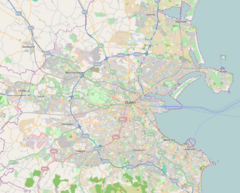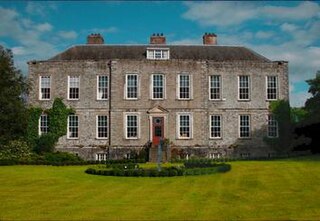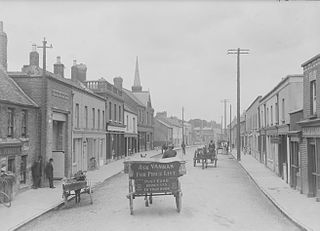
Rathfarnham is a Southside suburb of Dublin, Ireland. It is south of Terenure, east of Templeogue, and is in the postal districts of Dublin 14 and 16. It is within the administrative areas of both Dún Laoghaire–Rathdown County Council and South Dublin County Council.

Baron Massy, of Duntryleague in the County of Limerick, is a title in the Peerage of Ireland. It was created on 4 August 1776 for Hugh Massy, who had previously represented County Limerick in the Irish House of Commons. His son, the second Baron, also represented this constituency in the Irish Parliament. His great-grandson, the sixth Baron, sat in the House of Lords as an Irish Representative Peer from 1876 to 1915. He left such heavy debts that in 1924 the family were evicted from their home.
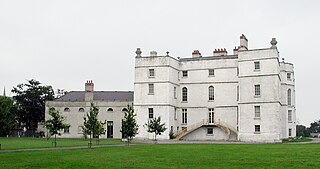
Rathfarnham Castle is a 16th-century fortified house in Rathfarnham, South Dublin, Ireland.

Belvedere House and Gardens is a country house located approximately 8 kilometres (5 mi) from Mullingar, County Westmeath in Ireland on the north-east shore of Lough Ennell. It was built in 1740 as a hunting lodge for Robert Rochfort, 1st Earl of Belvedere by architect Richard Cassels, one of Ireland's foremost Palladian architects.

Santry is a suburb on the northside of Dublin, Ireland, bordering Coolock, Glasnevin, Kilmore and Ballymun. It straddles the boundary of Dublin City Council and Fingal County Council jurisdictions.

Anne Devlin was an Irish republican who in 1803, while his ostensible housekeeper, conspired with Robert Emmet, and with her cousin, the rebel outlaw Michael Dwyer to renew the United Irish insurrection against the British Crown. When their plans for a rising in Dublin, the Irish capital, misfired, she endured torture and imprisonment. Outrage over her treatment secured her release in 1806, after which she was assisted for a period by the Emmet family. A long working life as a laundress ended in destitution.

Firhouse is an outer suburb of Dublin, in the county of South Dublin, in the south of the traditional County Dublin in Ireland. It developed from a rural village by the River Dodder, with a second settlement, Upper Fir-house, nearby. It is just outside the M50 orbital motorway, and in the postal district of Dublin 24. It is adjacent to Knocklyon and Ballycullen, and close to Tallaght. In the historic divisions of local administration, Firhouse is in the civil parish of Tallaght and the barony of Uppercross.
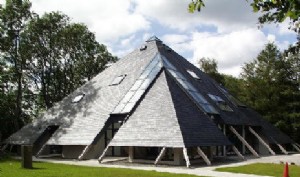
Larch Hill International Scout and Guide Centre is the national campsite, and administrative and training headquarters of Scouting Ireland. It was previously owned by Scouting Ireland (CSI).

Woodstock House and Estate is a derelict Georgian house and estate located near Inistioge, County Kilkenny, Ireland, on the west bank of the River Nore. The Ladies of Llangollen story began here and Mary Tighe died here. The house was destroyed by presumed arson after it was used a billet by the British army. The house is still a ruin but the gardens are open to the public.

Montpelier Hill is a 383-metre hill in County Dublin, Ireland. It is topped by the Hell Fire Club, the popular name given to the ruined building. This building – an occasional summer residence built in around 1725 by William Conolly – was originally called Mount Pelier and since its construction the hill has also gone by the same name. The building and hill were respectively known locally as 'The Brass Castle' and 'Bevan's Hill', but the original Irish name of the hill is no longer known although the historian and archaeologist Patrick Healy has suggested that the hill is the place known as Suide Uí Ceallaig or Suidi Celi in the Crede Mihi, the twelfth-century diocesan register book of the Archbishops of Dublin.
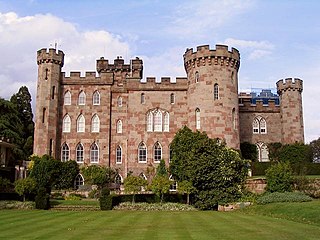
Cholmondeley is a civil parish in Cheshire, England, north east of Malpas and west of Nantwich. It includes the small settlements of Croxton Green and Dowse Green, with a total population of a little over a hundred, increasing to 157 at the 2011 Census. Nearby villages include Bickerton to the north east, Bulkeley to the north, Chorley to the east, No Man's Heath to the south west, and Bickley Moss to the south.
Bushy Park is a large, 20.5-hectare (51-acre), suburban public park in Terenure, Dublin, Ireland.
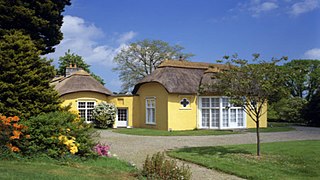
Derrymore House is a National Trust property in Bessbrook, County Armagh, Northern Ireland. The grounds are open to the public most of the year round and the drawing room or "Treaty Room" in the house itself on selected dates only. It is described by the National Trust as a "late 18th-century thatched house in gentrified vernacular style".
John Thomas William Massy, 6th Baron Massy was an Anglo-Irish peer.

The Dublin Mountains Way is a waymarked long-distance trail in the Dublin Mountains, Counties South Dublin and Dún Laoghaire–Rathdown, Ireland. The route is approximately 42 kilometres long and runs from Shankill in the east to Tallaght in the west. It has been developed by the Dublin Mountains Partnership, an umbrella group of relevant state agencies and recreational users working to improve recreational facilities in the Dublin Mountains.
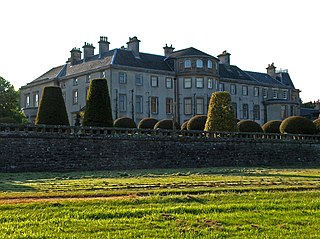
Keir House is a large country house near Stirling in central Scotland. It is located in the parish of Lecropt, 2.5 kilometres (1.6 mi) north-west of Bridge of Allan, in the former county of Perthshire. The estate was home to the Stirling family from the 15th to the 20th century. Keir House is protected as a category A listed building, and the grounds are included on the Inventory of Gardens and Designed Landscapes in Scotland, the national listing of significant gardens.
The High Sheriff of Leitrim was the British Crown's judicial representative in County Leitrim, Ireland from c.1582 until 1922, when the office was abolished in the new Free State and replaced by the office of Leitrim County Sheriff. The sheriff had judicial, electoral, ceremonial and administrative functions and executed High Court Writs. In 1908, an Order in Council made the Lord-Lieutenant the Sovereign's prime representative in a county and reduced the High Sheriff's precedence. However the sheriff retained his responsibilities for the preservation of law and order in the county. The usual procedure for appointing the sheriff from 1660 onwards was that three persons were nominated at the beginning of each year from the county and the Lord Lieutenant then appointed his choice as High Sheriff for the remainder of the year. Often the other nominees were appointed as under-sheriffs. Sometimes a sheriff did not fulfil his entire term through death or other event and another sheriff was then appointed for the remainder of the year. The dates given hereunder are the dates of appointment. All addresses are in County Leitrim unless stated otherwise.
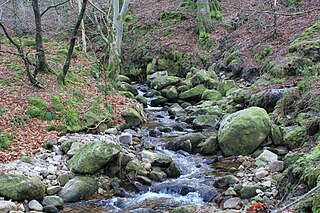
The Owendoher River is a small river in southern County Dublin, Ireland, the largest tributary of the River Dodder, and a part of the River Liffey system.
Annie Letitia Massy was a self-taught marine biologist, ornithologist, and an internationally recognised expert on molluscs, in particular cephalopods. She was one of the founders of the Irish Society for the Protection of Birds in 1904. Many of the details of her life are unknown which is attributed to the fact that she is often described as a shy and retiring person, with no known photograph of her in existence.

